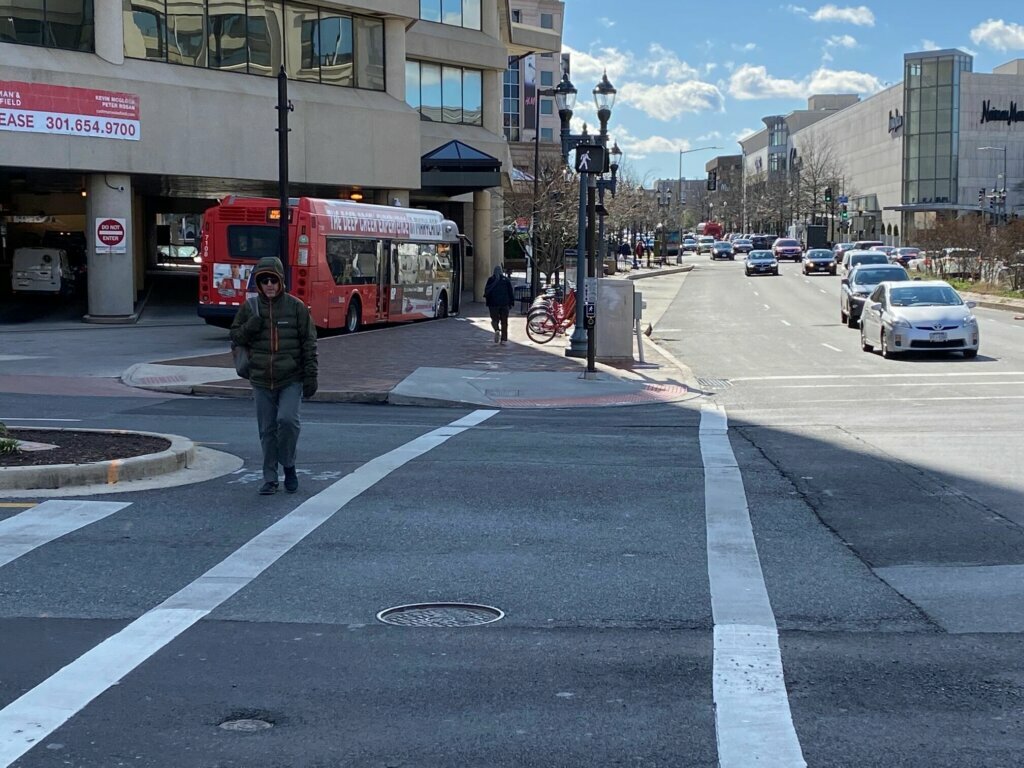
The number of pedestrians dying in car crashes in the U.S. appears to have climbed again in 2019, according to a new report released Thursday by the Governors Highway Safety Association.
The preliminary numbers for 2019 estimate about 6,500 pedestrians died last year, a 5% increase compared to 2018, and about a 50% increase nationwide over the last 10 years.
“This is a trend that we’re seeing, unfortunately, in the D.C. area and across the country,” said GHSA Executive Director Jonathan Adkins.
“These pedestrian deaths are frequently happening at night, when drivers aren’t able to see pedestrians as frequently,” Adkins said. “We’re also seeing that alcohol may be involved. We tend to drink more at night than we do in the daytime, when many of us are at work. When you couple these type of factors — darkness, alcohol — good things don’t typically happen.”
Adkins also said distracted driving and distracted pedestrians are also factors in the increasing numbers. So is the increasing number of a certain vehicle type seen on the roads everywhere.
“If that driver is in a big sport utility vehicle,” Adkins said. “[Pedestrians] are twice as likely to die as those struck by a car. It’s a combination of factors. Alcohol is a factor, distraction is a factor, the vehicle makeup, more SUVs on the road and darkness.”
The number of fatal pedestrian crashes in the D.C. region in particular were fairly flat — with D.C. and Maryland actually seeing declines in 2019, while Virginia saw an increase, according to the new GHSA report.
Adkins said while the numbers may have been fairly steady, they remain high and are unlikely to get much better in the near future.
“We hope the numbers don’t go up in 2020, but we’re hearing about a lot of tragedies across the country,” Adkins said. “So, there’s really no sign that the numbers are going to go down at this point.”
“There’s not just one thing” to solve the problem, Adkins added. “We’re not going to be able to build our way out of this. We’re not going to be able to enforce our way with additional law enforcement. It’s going to take a whole host of factors.”
Ultimately, Adkins said, it will require the combined efforts of everyone using the roads to alter the upward trend. “We’ve all got to make choices to share the roads together and make sure that we’re staying safe,” he said.








